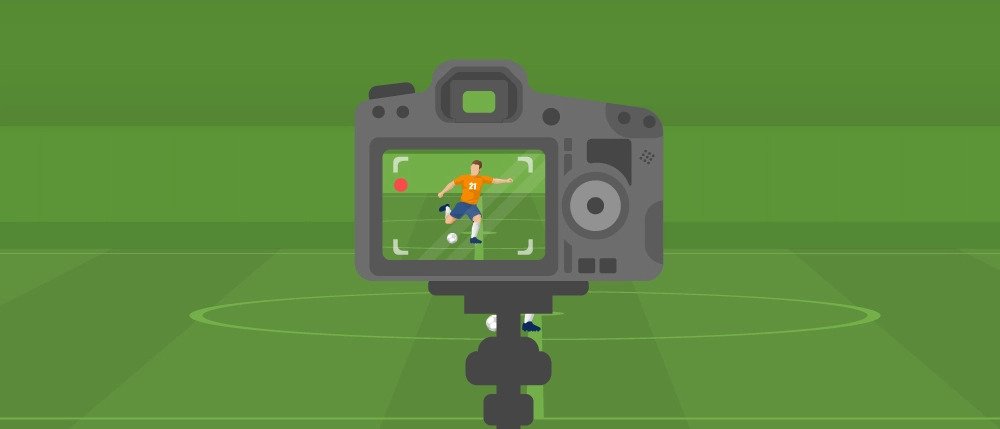Video quality has a huge impact on your analysis and feedback to players. A shaky or blurred image can not only lead to missing key incidents and learning opportunities, but also loses credibility with your players.
Luckily, there’s some ‘low hanging fruit’ here, and by getting the basics right you’ll be able to deliver 99% of what you need to without the need to spend more money or other resources on providing video. Higher quality doesn’t always mean more money.
A few weeks ago we heard of a club spending over £3,000 on a camera and some software to break down film, only to realize the camera man would have to climb on top of a van next to the pitch to capture any footage worth using.
Aside from looking amateur and likely only having, at best, average footage to use, this is a perfect example of doing the basics well before you start pushing for the extra 1%.
Here’s a few easy things to get right when filming games. Doing them well makes a huge difference.
Camera Location
The biggest factor in the quality of your footage will be camera location. Assuming you’ve only one camera filming the game, you should try to be as close to the half way line as possible. This gives an equal perspective to both ends, as well as the added bonus that it’s what your players see on their TV at home when watching broadcast games. Familiarity is your friend.
Even more important than the angle is the height. If there’s one thing you should choose to prioritize over all else, ensuring the game is filmed from an elevated position should always come first.
A high definition, crystal clear image shot at ground level, with no depth perception or idea of spacing is far less useful than a lower quality image which shows spacing, angles and positioning of your players.
Take a look at the two images below. This is the same team being filmed from two separate angles. Which would you prefer to use?


Camera Quality
There’s not really that much difference between a £350 camera and an £800 camera for filming your games. Yes, the more expensive camera may be record a slightly better image, but not to the extent that you can’t make out which player is which, or where the ball is.
The truth is most cameras available these days will do the job just fine. If you’ve the budget for a nicer one then of course that’s ideal, but the price of a camera is somewhere money can be saved if you are on a tight budget.
The two images below are shot from an £899 camera and a £425 one.


Other General Tips
- Try to capture at least half of the field at all times. Some coaches like the camera to zoom in and out for set pieces, which is fine, but in open play, you should ideally be able to see all 20 outfield players at all times.
- Always film with your back to the sun. Camera’s pointing towards the sun will cause the image to appear darker, meaning players and colors difficult to make out.
- Be prepared for rain. Invest in a rain cover or look into waterproof options if you are going to be filming sports outside.
- Make sure you have a spare battery and a memory card big enough to record a full game.










